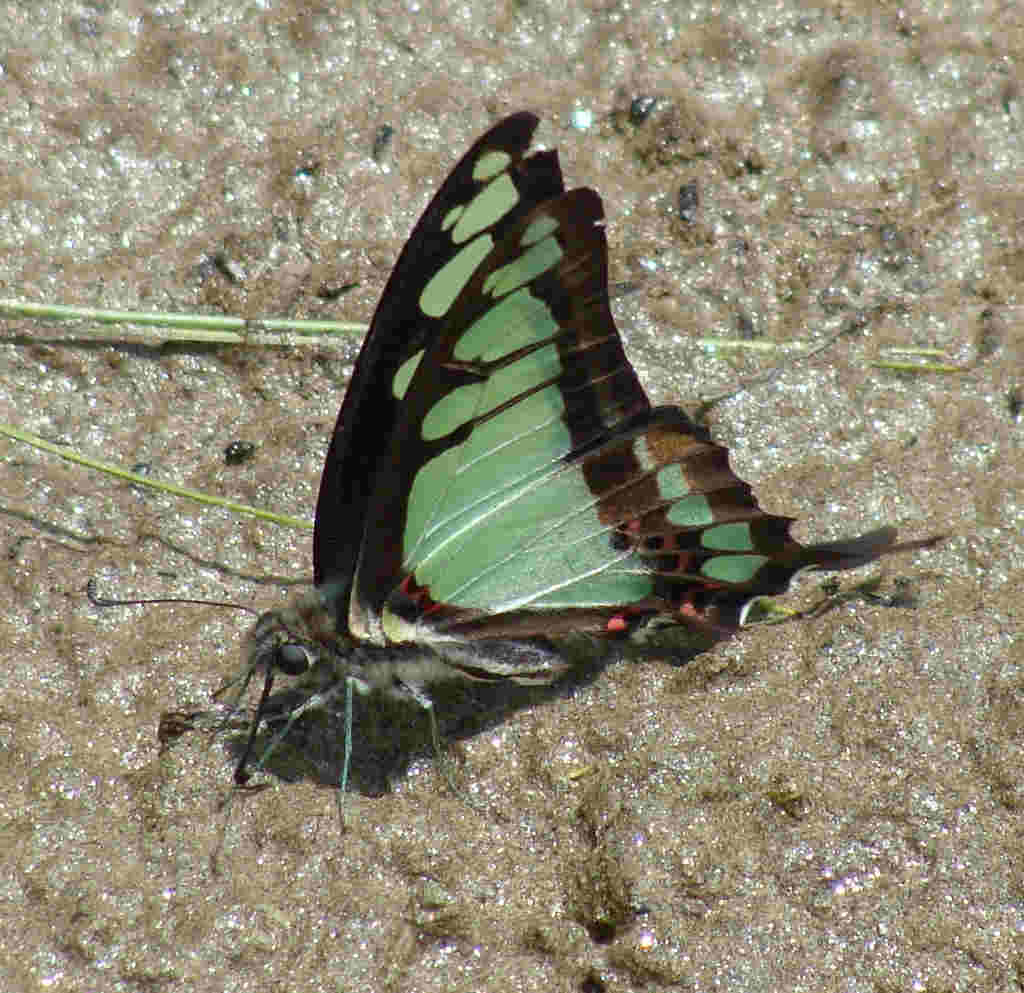
Graphium sarpedon (Glassy Blue Bottle)
Graphium sarpedon – The Bluebottle Butterfly in GHNP
It is also known as the Common Bluebottle, is a striking butterfly species found in the lush and biodiverse regions of the Great Himalayan National Park (GHNP). Its fast, erratic flight and brilliant colors make it a standout among the park’s many butterfly species.
| Common Name | Glassy Bluebottle |
| Scientific name | Graphium sarpedon |
| Family | Papilionidae |
| Description |
This butterfly is instantly recognizable by its bright, iridescent blue-green band running across black wings. The color contrasts beautifully against forest backdrops, and the swift, agile movements of Graphium sarpedon are a joy to watch for visitors hiking through GHNP. The underside of its wings is paler, aiding in camouflage when it rests. Graphium sarpedon thrives in moist, tropical and subtropical forest environments. In GHNP, it is commonly seen along forest edges, trails, and near water sources such as streams and waterfalls. These areas not only provide the butterfly with abundant nectar sources but also host plants like cinnamon and camphor trees, which are critical for caterpillar development. This butterfly is active during daylight hours and is particularly drawn to brightly colored flowers. It also exhibits mud-puddling behavior, where it sips mineral-rich moisture from damp soil—important for its nutrition and reproduction. Its rapid wingbeats and unpredictable flight path are defensive adaptations that help avoid predators in the dense forest. The presence of Graphium sarpedon in GHNP reflects the park’s ecological richness and the availability of clean, undisturbed habitats. Like other butterflies, it plays a key role in pollination, contributing to the park’s vibrant floral diversity. For further exploration of GHNP’s butterfly species, check out detailed profiles on Udara dilecta and Vanessa indica, or visit the main GHNP fauna page. |



